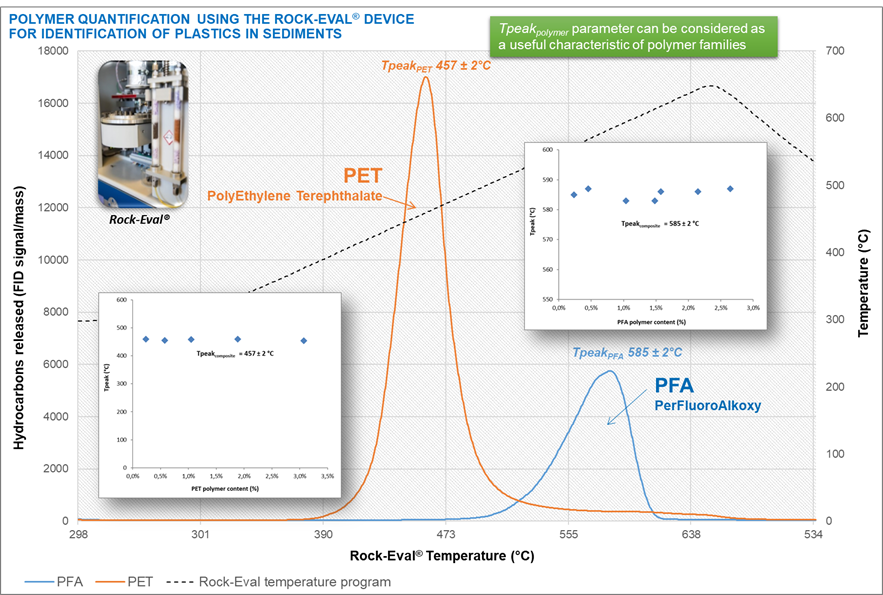The presence of plastics in the environment including waterways and the oceans is of increasing concern. During the last ten years, there has been work to identify and quantify this pollution. A standardisation effort is currently underway with the objective of increasing the speed with which samples are analysed and to limit handling. The Carnot IFPEN Ressources Energétiques is proposing a solution based on the Rock-Eval® device, and the initial results have just been published1.
Rapid analysis of plastics using Rock-Eval®
The presence of plastics in the environment is a major social and economic issuea. Significant progress has been made concerning the methods used to identify and quantify plastics in the environment over the last ten years. Nevertheless, there is consensus within the scientific community interested in plastic pollution for intensifying the research in order to be able to implement a standardised and rapid method that limits sample handling. IFPEN has therefore begun work on the problem by testing the potential of the Rock-Eval® device.

Caractérisation par dégradation thermique des principaux polymères pouvant contaminer l’environnement
This study1
is based on synthetic samples that were previously prepared using four different mineral matrices and selected polymers (PE, PP, PE100, PA6, PA11, PFA and PET), distributed in controlled concentrations. It is demonstrated that each polymer analysed presents Rock-Eval® parameters (e.g. Tpeakb, Total HCc) that can be used as specific properties when identifying and characterising the polymer family. The correlation coefficients obtained for the analysed parameters and the thermal values were very good, indicating that all of these Rock-Eval® parameters can be used to define the polymer content. This implies that this thermal degradation method can be used to characterise the plastic content in sediment samples.
An environnemental barometer capable of very precise detection
The first obtained results demonstrate a detection limit of approximately 0.2 to 0.5 % by weight for a 60 mg sediment sample. Additional work is being performed on this detection limit in order to extend the application of the method to as many environmental matrices as possible. The method can thus be considered an additional and rapid screening approach that can be implemented before or at the same time as more sophisticated analytical techniques such as SEM, Raman and FTIR measurements.
a- see for example the 2020 Senate report.
b- TPeak is the temperature corresponding to the maximum achieved by the flame ionization detector signal.
c- Total HC is the quantity of hydrocarbon compounds released during the total pyrolysis of the polymer.
Référence :
(1) M.-F. Romero-Sarmiento, H. Ravelojaona, D.Pillot, S. Rohais, “Polymer quantification using the Rock-Eval® device for identification of plastics in sediments”, Sciences of the Total Environment, 2022. DOI : https://doi.org/10.1016/j.scitotenv.2021.151068
Scientific contacts: Maria-Fermanda Romero-Sarmiento, sebastien.rohais@ifpen.fr
> Offer: Geochemistry



